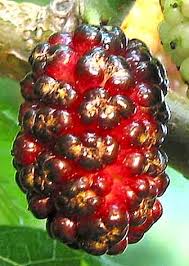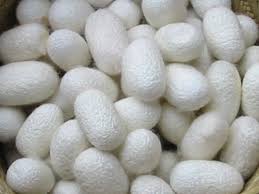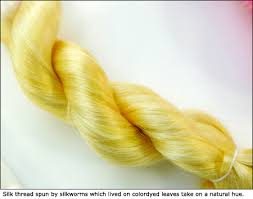MULBERRY TREE -zetarra marugatze arbolean
Mulberry tea reduces sugar and cholesterol levels in your blood. It adjusts the blood pressure to normal level and reduces the risk of liver cancer.
 The leaves, fruits, and stems of mulberry trees have been used for over 5,000 years. Varieties include wild, white, black, and red mulberries. They grow all around the world. The edible berries are both tasty and nutritious, and the leaves can be eaten as a vegetable or brewed into tea. The leaves of the mulberry tree, are used to make tea. The tea has the ability to block the absorption of sugars, which makes it healthy for diabetics.
The leaves, fruits, and stems of mulberry trees have been used for over 5,000 years. Varieties include wild, white, black, and red mulberries. They grow all around the world. The edible berries are both tasty and nutritious, and the leaves can be eaten as a vegetable or brewed into tea. The leaves of the mulberry tree, are used to make tea. The tea has the ability to block the absorption of sugars, which makes it healthy for diabetics.
 The top of the branch is cut at an angle to prevent rainwater lying on the cut surface. It can be rooted where it is to be grown. Where more than one is being propagated, space at least 60cm (2ft) apart. The following winter ease the rooted plant out of the ground without damaging the roots.
The top of the branch is cut at an angle to prevent rainwater lying on the cut surface. It can be rooted where it is to be grown. Where more than one is being propagated, space at least 60cm (2ft) apart. The following winter ease the rooted plant out of the ground without damaging the roots.
 Fruit ripens for weeks during late August and early September. Birds love mulberries and netting is recommended to ensure that the crop is not eaten before you can harvest it.
Fruit ripens for weeks during late August and early September. Birds love mulberries and netting is recommended to ensure that the crop is not eaten before you can harvest it.

 When ripe fruit falls on the surface of a patio it will make unsightly stains (one good reason why you should not plant a mulberry over a patio). Beware of carrying squashed fruit into the house on shoes. If the tree is planted as a specimen in a lawn, the grass must be kept short at harvest time so the fruit is easy to spot.
http://youtu.be/rdm5ARzrFbc
When ripe fruit falls on the surface of a patio it will make unsightly stains (one good reason why you should not plant a mulberry over a patio). Beware of carrying squashed fruit into the house on shoes. If the tree is planted as a specimen in a lawn, the grass must be kept short at harvest time so the fruit is easy to spot.
http://youtu.be/rdm5ARzrFbc
http://www.sidhhaherbs.blogspot.com
Morus, a genus of flowering plants in the family Moraceae, comprises 10–16 species of deciduous trees commonly known as mulberries growing wild and under cultivation in many temperate world regions.
Mulberry tea reduces sugar and cholesterol levels in your blood. It adjusts the blood pressure to normal level and reduces the risk of liver cancer.
Mulberry tea helps to flush fluids and toxins out of the body. It is considered a diuretic. Also, it helps with weight loss because of its ability to block the absorption of sugars.
The mulberry most resembles a raspberry but is so soft that harvesting is difficult. It must be eaten on the day it is picked but doesn't pack or travel well, so the only reliable way to enjoy the mulberry's unique, fresh flavor is to grow your own.
It is usually grown as a standard tree, often with the lower branches removed. The tree grows to an incredible age and becomes beautifully gnarled and twisted over the years, which makes it a favorite with children for climbing.
The mulberry will succeed in all but the coldest areas but prefers a position in full sun. Pliny the Elder described it as "the wisest of trees" because it comes into leaf and flower after all risk of frost has passed and drops its leaves in early autumn before the onset of cold weather.
Being self-fertile it crops every year. In northern gardens, young plants may suffer in a cold wind and an alternative method of growing is to train it as an espalier against a sunny south-facing wall.
The mulberry will thrive in most soils providing the drainage is good, with heavy crops even where the ground is poor and infertile. A neutral to slightly acid soil with a pH of between 5.5 and 7 is ideal.
A mulberry tree may be grown in a large container but will eventually outgrow the available root space. When planting, use a soil-based compost and position the tree so that the finished level is 7cm-10cm (3in-4in) below the top of the container. This will allow for an annual 2cm-3cm (1in) layer of fresh compost.
A bare-root tree may be planted in winter, but the roots are brittle so take care when backfilling with compost. Use your fist rather than your foot to firm the soil. Container-grown trees may be planted at any time of the year but avoid purchasing plants that are pot-bound with a tangled mass of roots.
Take semi-ripe cuttings in summer, pulling off this year's growth with a small heel of older wood. Root in a gritty, free-draining compost.
The simplest method of propagation is to root a large hardwood cutting (a "truncheon") in late autumn. Select a three-year-old branch that is as thick as your wrist and up to 1m (3ft) long. Drive it into the ground at least 30cm (1ft) deep.
For the first two years after planting, make sure that the mulberry is never short of water. Until the plant is established the roots are slow to spread and will benefit from 10cm (4in) of bark or compost mulch. An annual, early summer application of Growmore at 60g per square meter scattered over the root zone will encourage strong growth. A high-potash liquid feed of tomato fertilizer in early August will strengthen the branches.
Once established, little pruning is necessary. Mulberries bleed if pruned when the sap is rising, so remove broken, dead or damaged branches in early winter. Prune young trees in late summer when the growth has settled down. Remove any low branches and those crossing into the centre of the tree back to the main trunk.
Old branches can be brittle and a heavy crop may cause them to crack or break. Use forked sticks as props to support the main branches from summer onwards.
The simplest method of harvesting is to spread a cotton, plastic, or fine-mesh sheet on the ground and shake the tree every other day. There will be leaves, twigs, debris, and the occasional unripe berry mixed in with the ripe fruit. Either pick out the fruit by hand or put everything into a tub of water. The ripe fruit will sink and the debris may be skimmed off the surface.
Turning cocoon into silk rope for five generations

 The business of the silkworm, which is to produce ropes from cocoons, is being made using traditional methods by a local of Hatay, despite modern technology. Hasan Büyükaşık has been in the business for years, as the fifth generation in a facility in the garden of his house
The business of the silkworm, which is to produce ropes from cocoons, is being made using traditional methods by a local of Hatay, despite modern technology. Hasan Büyükaşık has been in the business for years, as the fifth generation in a facility in the garden of his house
Hasan Büyükaşık, a local of the southeastern province of Hatay, has been recently been getting involved with his father’s business of producing silkworms with traditional methods. Büyükaşık, 78, produces silk products in his garden facility with his wife and children and exports them to countries from the U.S. to China.
Speaking to the Anatolia news agency, Büyükaşık said silkworm producers began working every spring when berry trees begin to blossom. He said they put the cocoon on the ground and that worms are born after a 19-day incubation period.

 Then worms begin to spin the cocoon and finish it in 10 days. “It is a supernaturalistic thing. Some worms remain in the cocoon that they spin and some leave it. We put the cocoons that are in good condition in hot water and try to get the ropes from it with the help of a specially made broom. We can get a nearly 1,700-meter-long silk rope from one cocoon, then we process it and get colorful ropes using Madder. These valuable ropes turn into dresses, scarves, or sheets,” Büyükaşık said.
Then worms begin to spin the cocoon and finish it in 10 days. “It is a supernaturalistic thing. Some worms remain in the cocoon that they spin and some leave it. We put the cocoons that are in good condition in hot water and try to get the ropes from it with the help of a specially made broom. We can get a nearly 1,700-meter-long silk rope from one cocoon, then we process it and get colorful ropes using Madder. These valuable ropes turn into dresses, scarves, or sheets,” Büyükaşık said.
He said that when he was a child there was always a furnace in the garden of every house but that this is now history because of developing technology. “I am in love with this business. It has been continued in my family for five generations and I have never left it,” he said.
Despite modern technology, Büyükaşık’s business has always used traditional methods in the garden of his house. His eight children and wife also work with him to produce the silk. “In the past, I used to weave the silks on a bench in the garden of my house. We have improved our business over time and established a big facility next to my house. Along with my eight children and wife, I also employ nine people. Overall, we have produced ropes from nearly six tons of cocoons. We hope this year will be even more productive,” he said.
Büyükaşık said they sold most of their products in Turkey, although they exported 20 percent of their products to foreign countries, from the U.S. to Italy, and China.
Speaking to the Anatolia news agency, Büyükaşık said silkworm producers began working every spring when berry trees begin to blossom. He said they put the cocoon on the ground and that worms are born after a 19-day incubation period.
He said that when he was a child there was always a furnace in the garden of every house but that this is now history because of developing technology. “I am in love with this business. It has been continued in my family for five generations and I have never left it,” he said.
Despite modern technology, Büyükaşık’s business has always used traditional methods in the garden of his house. His eight children and wife also work with him to produce the silk. “In the past, I used to weave the silks on a bench in the garden of my house. We have improved our business over time and established a big facility next to my house. Along with my eight children and wife, I also employ nine people. Overall, we have produced ropes from nearly six tons of cocoons. We hope this year will be even more productive,” he said.
Büyükaşık said they sold most of their products in Turkey, although they exported 20 percent of their products to foreign countries, from the U.S. to Italy, and China.
(56)
Comments